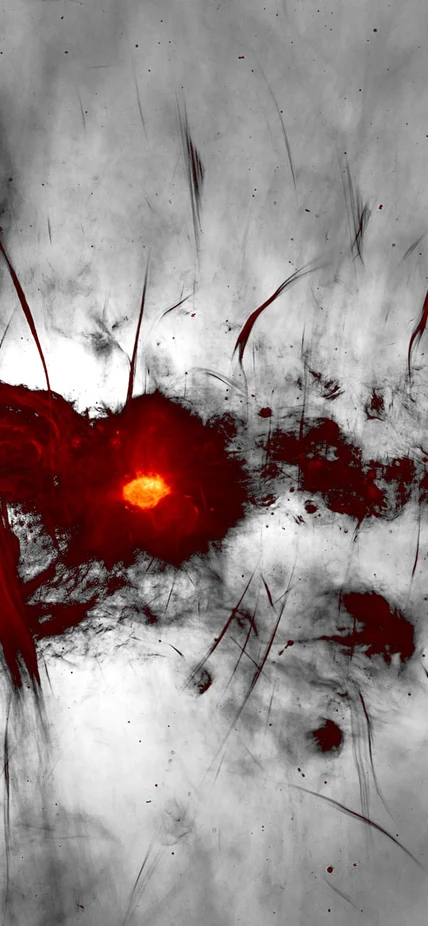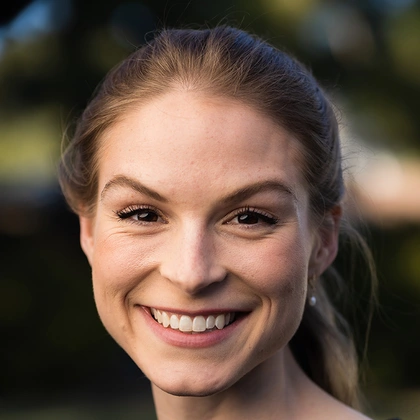
What is your general field of study?
I study galaxy evolution—how galaxies have formed, grown, and changed over the history of the universe. That can mean different things to different people, but my focus is on understanding how galaxies built up their mass and formed stars over cosmic time. I'm especially interested in a period roughly 10 billion years ago, when galaxies were much more active in forming stars than they are today.
At the heart of my work is a fundamental question: When and how did galaxies grow into the diverse systems we see in the universe now?
Traditionally, astronomers have studied this question using visible light, which is detectable to the human eye and with optical telescopes. My approach is different: I look at radio light. Less than a century ago, scientists discovered that the center of our own galaxy emits radio waves, and we've since learned that many other galaxies do, too.
Observing galaxies in radio wavelengths allows me to make a similar measurement to what people have done in the past with visible light. Interestingly, the story radio light tells doesn’t always match the results derived from visible light. That has been a fun puzzle to work out.
Did you always think you would be a scientist?
I never thought I was going to be an astronomer; it never even occurred to me that astronomy or physics were viable career paths. I had a pretty naive picture of what astronomers do. I thought it was about looking up at the sky and counting stars, or mapping out constellations. I went to a small high school in small-town Maine, and neither the school system nor the education it offered were very advanced. I always loved math, but physics wasn’t even part of the curriculum. It wasn’t until I started undergrad as a math major that I was introduced to physics and I added it as my second major.
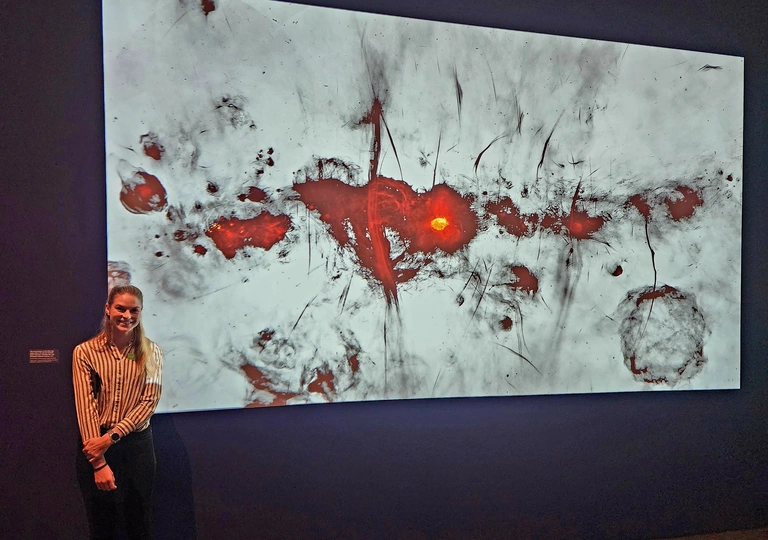
Was your love of science shaped by a particular experience or mentor?
There are a lot of people and experiences that have shaped my love of science. A pivotal turning point was my introduction to radio astronomy in an undergrad quantum mechanics class in my sophomore year. My professor, Dr. David Nice—who became my undergraduate advisor—treated me as an equal in terms of the quality of my ideas and ability to do science. Working with him made me realize for the first time that I could become an astrophysicist. About halfway through the course, he sent me an email saying how impressed he was by my performance in class. He asked if I would be interested in doing research with him that coming summer. I was thrilled—I remember calling my mom to tell her about it. That summer—the one between my sophomore and junior years—I traveled to Puerto Rico to work with the Arecibo Telescope. It would mark not only my first-ever research project, but my first hands-on experience using a telescope and gathering data in a formal observational environment. The research focused on the study of pulsars, which are the ghost remnants of massive stars that have exploded and left behind neutron stars. For reasons we don’t really know, these neutron stars occasionally spin really rapidly and beams of radio light reach us in extremely stable pulses (think space lighthouse), rivaling the precision of an atomic clock. Using a network of pulsars to detect gravitational waves was a massive, multi-decade project and my role was pinpointing the locations of these pulsars in our galaxy. I mapped out their positions and measured how quickly they were moving, with the goal of tracing them back in time to their origins. Ultimately, I was trying to determine how far they had moved through our galaxy over the past several billion years and what that tells us.
What is the coolest thing you’ve worked on so far in your career and what do you think is the most exciting research direction happening in your field right now?
The answers to both these questions are linked. The coolest thing I’ve worked on so far has been helping to commission—which means a lot of technological testing—the MeerKAT radio telescope in South Africa, one of the most advanced radio telescopes in the world. Through my Ph.D. advisor and some scientists there, I was tasked with testing how deep or sensitive the telescope’s images could go. I even got to travel to South Africa, which was an unforgettable experience.
One of the things that makes the field of radio astronomy so compelling is that it’s so new. For example, Edwin Hubble discovered that other galaxies existed using visible light, but that was before we even knew the universe emitted radio waves. Having that information has opened up radio astronomy as a brand new frontier in scientific exploration and discovery. Every new observation has the potential to rewrite what we think we know about the universe. And there are so many things left to discover that we can’t even imagine at this point. So, I think radio astronomy itself is the most exciting research direction right now.
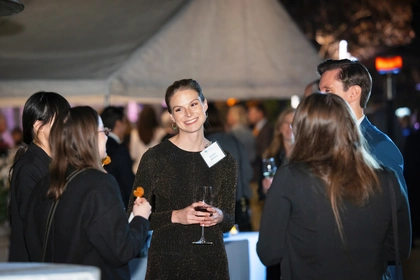
Looking 10 years ahead, what future development do you think will have the greatest impact on your field?
Looking ahead, I think the greatest impact on astronomy will come from advances in computational technology—especially in how we store, process, and analyze data. Telescopes today produce an overwhelming amount of information—far more than we can fully process with current tools. Innovations like quantum computing, faster processors, and even AI will be game changers. They’ll help us sift through enormous datasets quickly, uncover subtle patterns, and maybe even detect things we didn’t know we were looking for. In a field where discovery often hides in the noise, better computation could unlock entirely new ways of understanding the universe.
Do you have a favorite galaxy and why?
My favorite galaxy is called NGC 1532. It’s a galaxy that looks normal optically, but observing it with a radio telescope we noticed huge fountains of material coming off of it that weren’t visible without radio.
Who is your “Science Superhero?”
My science superhero is Jocelyn Bell Burnell, one of the pioneers of radio astronomy. While earning her England in the 1960s, she discovered pulsars—an entirely new class of astronomical objects. But instead of being recognized for the discovery, her Ph.D. advisor got the credit and was awarded the Nobel Prize. It was an egregious injustice. And yet, she didn’t let that define her. She continued to pursue science with humility and grace, becoming a role model for what it means to dedicate oneself to science for its own sake—not for awards or attention, but out of deep curiosity and commitment to learning and uncovering knowledge.
What are some of the challenges you have encountered so far in your career and how did you address them?
One of my biggest challenges was a very traumatic stalking experience while I was in graduate school at the University of Virginia. The perpetrator was an older peer. I eventually connected with another graduate student and discovered he had done the same thing to her. Science is such a traditionally male-dominated field and there are not a lot of built in protections for women at most universities. We wanted to protect future students from having the same experience, so we reported him to the university’s administration and they did nothing. That man is still active in science today and is well-respected in his field. I still suffer from PTSD.
Another major challenge at this particular moment is the threat to federal funding of science research in the foreseeable future. The future for scientists in the United States is very uncertain right now.
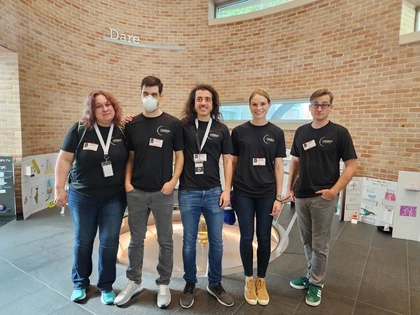
What advice would you give to graduate students and others who are just starting their scientific careers?
Ask for help! You don’t need to do it all alone and reaching for help is not a weakness. Your peers and community can be a huge form of support. No matter what’s going on, leaning on other people is okay. And at the same time, you can be there for others.
Why did you decide to do a postdoctoral position at Carnegie?
Carnegie is one of the best scientific institutions for optical astronomy, so it was a natural choice for expanding my expertise beyond the radio. The resources are outstanding and it has an amazing community of scientists and engineers.
What has your experience at Carnegie meant to you.
My experience at Carnegie has been so wonderful for a multitude of reasons. I have really been able to expand my technical expertise. And it’s an organization that has really supportive staff scientists and a postdoc community that is encouraging and collaborative—not competitive. Being in such a nurturing environment has been a stark contrast to what I experienced in graduate school. It has been like a rebirth for me as a scientist.
